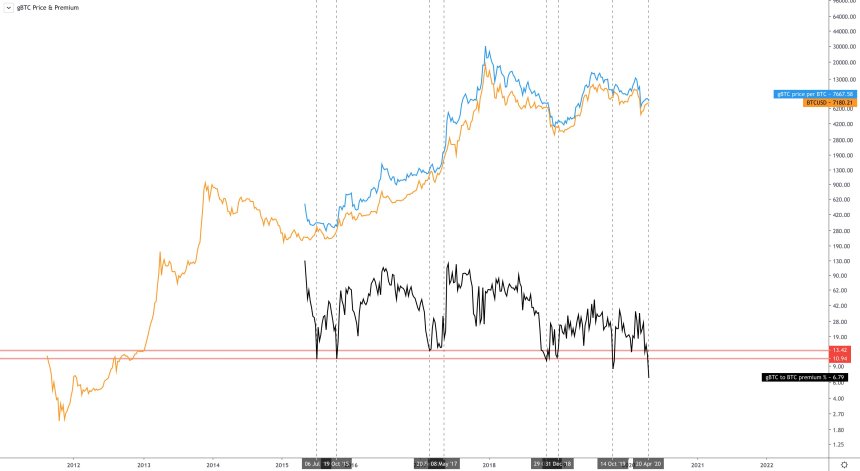At a macro level, the Bitcoin price bottomed every time the premium of Grayscale Bitcoin Trust (GBTC) fell substantially to a local low. After showing a 30 percent premium in March, GBTC markups fell steeply.

Why GBTC premiums occur and how it affects the Bitcoin price
For institutional investors in the likes of hedge, family, and pension funds, Grayscale and its products remain as the most accessible entry into the cryptocurrency market.Following the initial spike in demand for Bitcoin, markups of institutional products have noticeably declined. Historically, such a trend led to the formation of a prolonged rally for BTC and the cryptocurrency market.
One cryptocurrency trader said:“Historically, it has been profitable to accumulate Bitcoin as GBTC premium visited its lows. Same goes for selling at high premiums. Useless sample size, but let’s be honest, this applies to many things regarding the young asset. Funny recurring double bottoms by the way.”The reasons behind the correlation between the drop of GBTC premiums and an extended recovery of Bitcoin remain unclear; it is possible that BTC rallies after a fear of missing out (FOMO)-like accumulation phase occurs among institutional investors.
Small sample and limited data, but worth the consideration
The pattern of the Bitcoin price recovering following a clear drop in GBTC premiums is based on limited sample and data. But, BTC is an emerging asset with relatively low liquidity and investor base when compared with traditional assets like gold.For that reason, historically accurate fractals and patterns tend to reoccur and impose similar effects on the price trend of Bitcoin over long periods of time.












